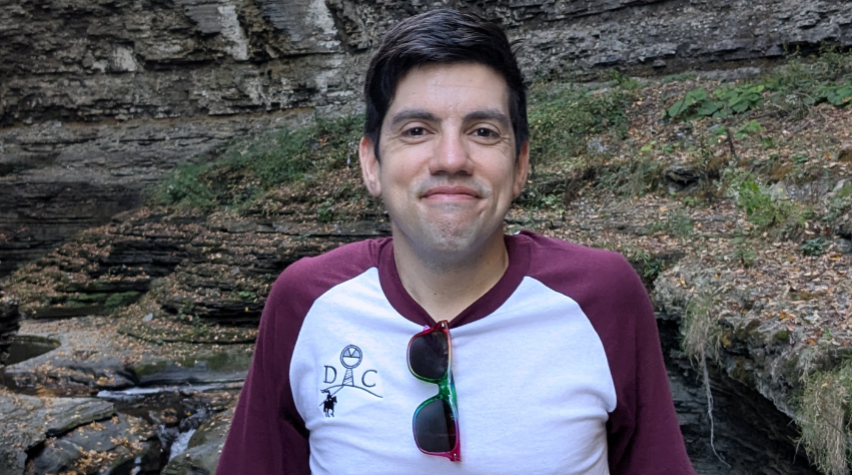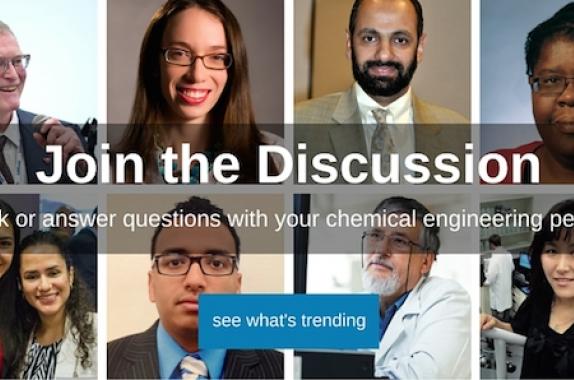
Disclosure: This post is sponsored by ExxonMobil and reflects their views, opinions, and insights.
The 5th Annual ChemE Cube Competition™, powered by RAPID® and ExxonMobil, will focus on direct air capture (DAC) and regeneration, and take place November 2–3 in Boston, MA, during the 2025 AIChE Annual Student Conference (ASC). This year, 23 teams were selected to participate in the competition.
We spoke with Joe Falkowski, Active Material Discovery and Development Scientist at ExxonMobil, about one of today’s most exciting challenges in carbon capture: developing the materials that make direct air capture possible. He shared insights on the unique materials challenges of DAC, the progress made over the past year, and how ExxonMobil is working to develop scalable, high-performance adsorbents for this critical climate solution.
Why is direct air capture important?
To meet global climate goals, the need for negative emissions technologies is clear. DAC stands out as a promising solution because it removes CO₂ directly from the atmosphere, rather than from a concentrated point source. This approach makes it uniquely suited to offset emissions from hard-to-abate sectors while also generating high-quality, verifiable carbon credits.
Last year, we highlighted the work of Jun Shi and our DAC team in demonstrating a novel process aimed at producing economically competitive DAC credits. That effort laid the groundwork for the materials development efforts I’m leading today.
So, what makes DAC such a tough materials challenge?
Unlike traditional capture technologies, I work with DAC under ambient conditions that vary widely and cannot be tightly controlled. This creates a demanding environment for the sorbent materials used to capture CO₂. To be viable, these materials must:
- Exhibit high selectivity for CO₂ at extremely low concentrations.
- Be regenerable with minimal energy input—both power and heat.
- Maintain robust performance despite exposure to oxidative, hydrolytic, physical, and atmospheric degradation.
- Be scalable and economically viable at commercial levels.
In short, DAC is one of the toughest puzzles I’ve faced in carbon capture, and solving it is key to making the technology practical at scale.
What is ExxonMobil doing to address these challenges?
As part of our DAC technology development efforts, I’m focused on discovering, developing, and deploying an adsorbent system that meets these demanding criteria. My work spans everything from fundamental chemistry to process engineering.
We’re exploring a broad aperture of material types, including:
- Solid adsorbents like MOFs, oxides, resins, and zeolites
- Liquid systems such as polymeric sorbents.
Each candidate is evaluated against the triple challenge of productivity, energy efficiency, and long-term stability.
What progress has been made?
Since our initial process feasibility demonstration, we’ve screened multiple generations of adsorbent materials. The latest generation has rapidly scaled from lab to pilot scale, and shows significant improvements in performance.
Testing these materials in our prototype unit under real-world conditions has been especially valuable. Lab-based tests can only go so far; field testing has revealed key variables that govern material performance and longevity. This has enabled faster iteration cycles and deeper insights into:
- Oxidation and hydrolysis mechanisms
- Thermal stability
- Material composition and formulation impacts.
These insights are helping us refine our testing methods and accelerate development as we move closer to our goals.
Why does this work matter?
Developing materials that can perform reliably in DAC systems is essential to making this technology scalable and impactful. It’s a challenge that demands creativity, rigor, and cross-disciplinary collaboration.
As I often say, we’re solving problems that haven’t been solved before. The materials we develop today could be the foundation for tomorrow’s carbon removal infrastructure. That’s a responsibility we take seriously, and it’s what makes this work so exciting.
Learn more about how ExxonMobil is accelerating society’s path to net zero by scaling up emissions solutions for key industries.
Learn more about direct air capture and follow ExxonMobil’s Low Carbon Solutions on LinkedIn.
Join us live in Boston during the Annual Meeting and Annual Student Conference to cheer on the teams as they bring their ChemE Cube innovations to life.

Joe Falkowski
Joe Falkowski is an active materials discovery and development scientist on ExxonMobil’s direct air capture pilot. Learn more.
Disclosure: This post is sponsored by ExxonMobil and reflects their views, opinions, and insights.





